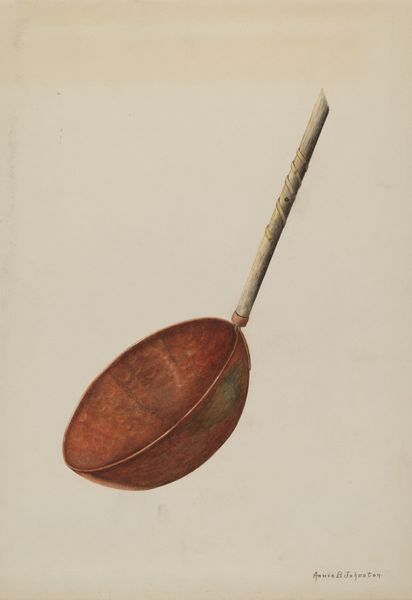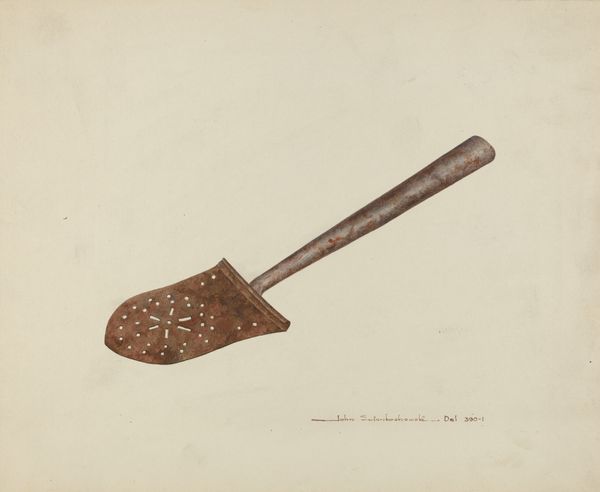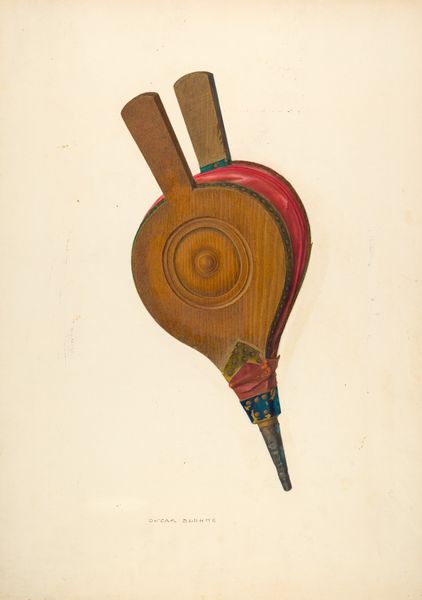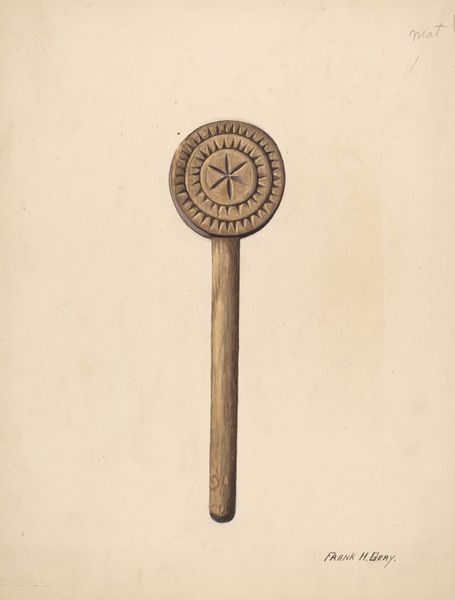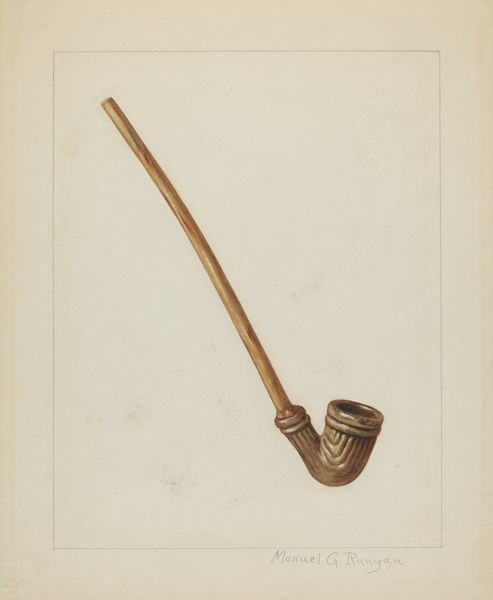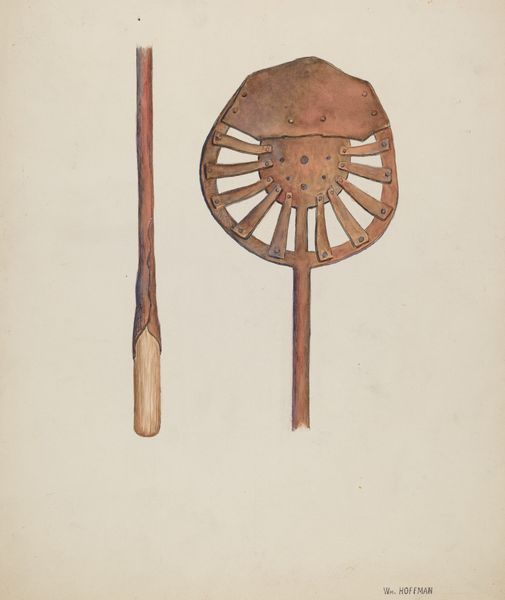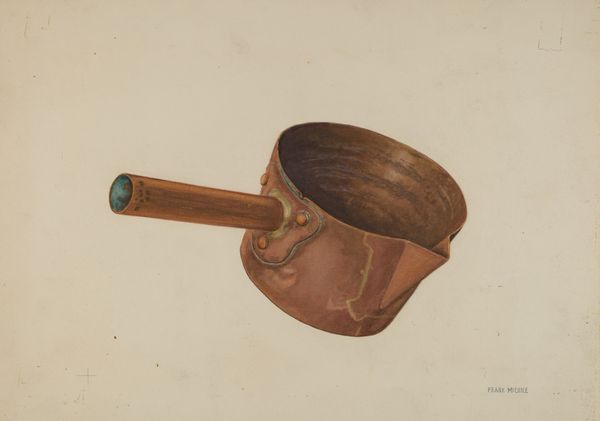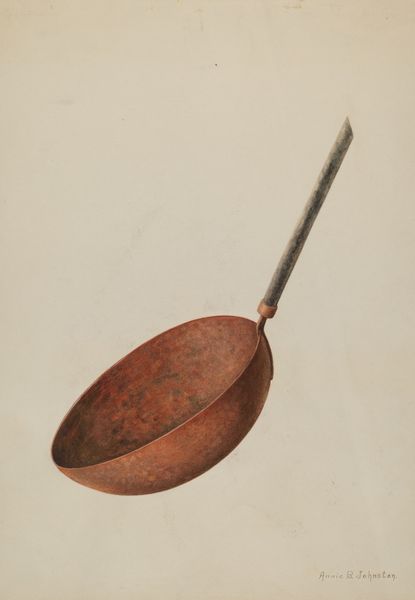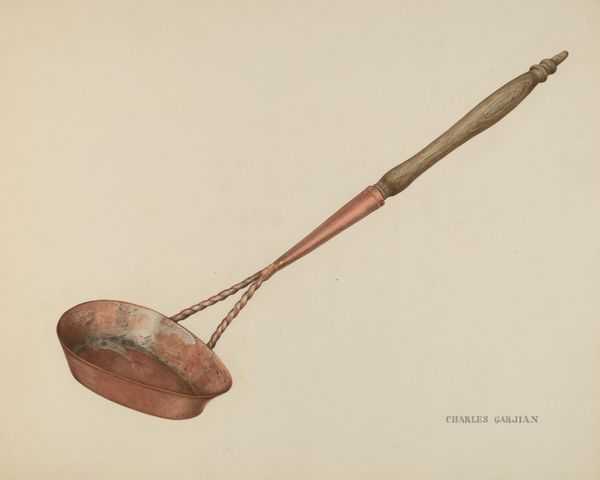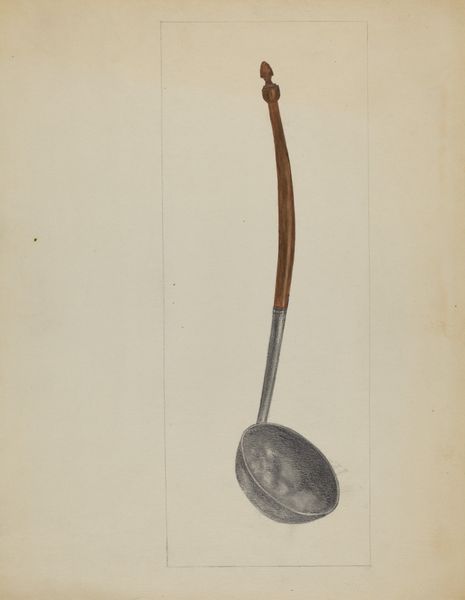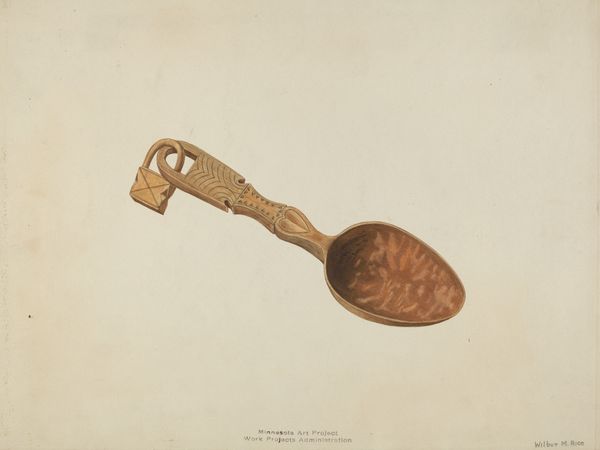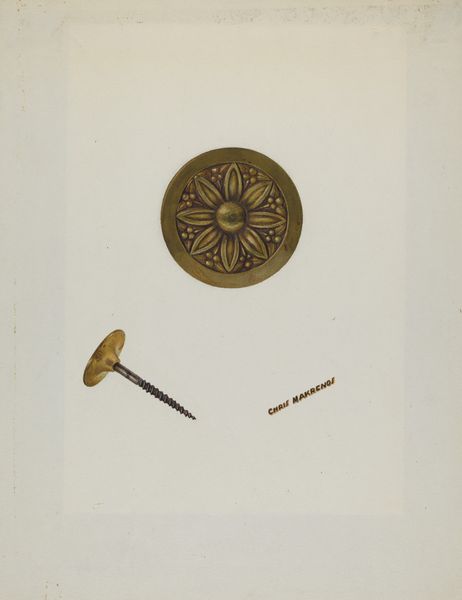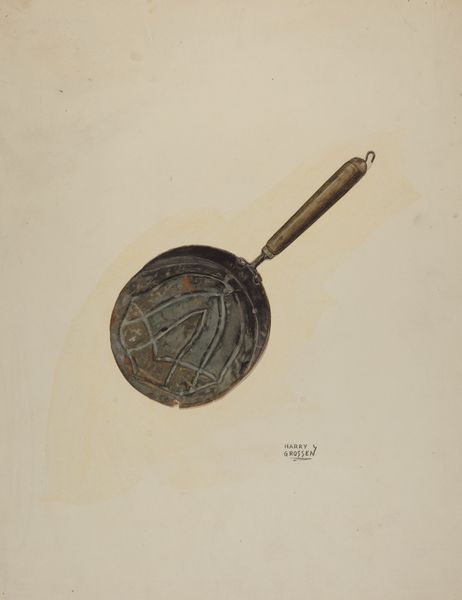
drawing, watercolor
#
drawing
#
watercolor
#
academic-art
#
watercolor
#
realism
Dimensions: overall: 44.4 x 36.3 cm (17 1/2 x 14 5/16 in.)
Copyright: National Gallery of Art: CC0 1.0
Curator: The intimacy in this watercolor drawing immediately grabs me. It feels so quiet, domestic. Editor: Absolutely. Ray Price’s "Bed Warmer," created around 1938, speaks volumes about pre-industrial comforts and the labor inherent in homemaking. The use of watercolor is telling, focusing more on observation than an interest in romantic depictions of the same object. Curator: Thinking about this object today, its function seems so strange and almost precarious—heating a bed with hot coals? I find myself considering issues of safety, gendered labor roles, and, fundamentally, access to warmth. Whose bed was being warmed? Who was performing that labor? Editor: Precisely. This "Bed Warmer" connects directly to a material culture vastly different from our own. It represents human ingenuity addressing basic needs through available resources – copper, wood, and fire. The craftsmanship of the object and Price's clear depiction speak to the social and material conditions of that time. Someone labored to craft the warmer; others burned coal, likely to create conditions of warmth for privileged women. Curator: I think the perspective amplifies this feeling of domesticity. It’s shot from above as if documenting what we are seeing in that domestic interior. It almost evokes Judith Butler's thoughts on gender performativity. Warmth and comfort are not inherently natural or universally accessible. These things are produced and maintained through labor, which often reflects social structures, power dynamics, and expectations based on gender. The image makes that production so obvious, but easily goes unnoticed without analysis. Editor: Yes, and by focusing on a seemingly mundane object like this, Price provides a subtle but potent glimpse into past manufacturing and consumption patterns. Watercolor feels relevant: readily available to common makers, but also used for precise depictions to understand process. Curator: Seeing this depiction of a common item can serve to bring a broader cultural dialogue and historical awareness to ordinary things that define the culture, habits and lives of past generations. Editor: I agree. Ray Price asks us to really think about what objects can tell us if we examine the materials that constitute our worlds.
Comments
No comments
Be the first to comment and join the conversation on the ultimate creative platform.
